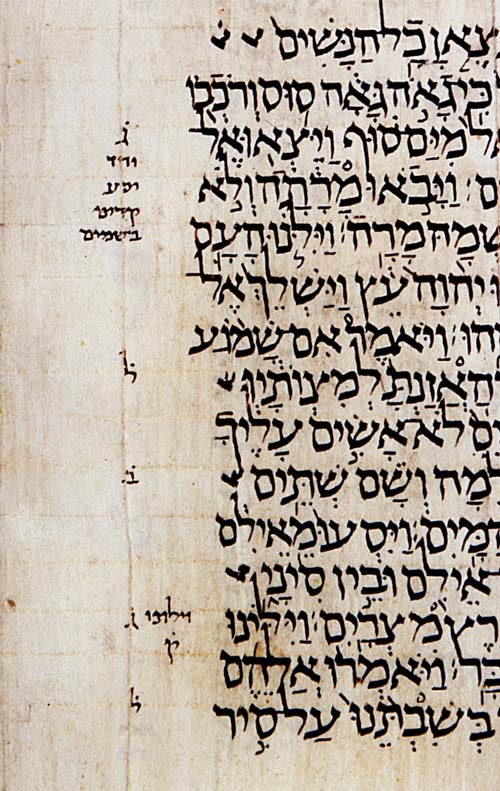

Since 1947 thousands of fragments of MSS, both biblical and nonbiblical, have come to light in the Dead Sea region. (1) Dead Sea Scrolls The earliest MS evidence available for the OT text is also the most recently discovered. It is the Masoretic text that we find in our printed Hebrew Bibles today. In addition, on the margins (Masora) of the manuscripts, they added notes, bringing attention to textual issues and offered what they believed to be the correct readings. However, for fear that the correct pronunciation of the words would be lost, they added pointing and accents to the vowelless consonantal text. They made no changes to the words within the text itself. The Masoretes (of the 6th to the 10th C.E.) endeavored to transmit the Hebrew text faithfully. The oldest complete and still kosher Torah scroll still in use has been carbon-dated to around 1250 and is owned by the Jewish community of the northern Italian town of Biella. The majority of the manuscripts have survived in a fragmentary condition. Manuscripts earlier than the 13th century are very rare. The largest organized collection of Hebrew Old Testament manuscripts in the world is housed in the Russian National Library (“Second Firkovitch Collection”) in Saint Petersburg.Ĭodex Leningradensis is the oldest complete manuscript of the Hebrew Bible in Hebrew. 14 scroll manuscripts were discovered in Masada in 1963–1965. There are more than 200 biblical manuscripts among the Dead Sea Scrolls, some of them were written in the Paleo-Hebrew alphabet. In the old synagogue in Cairo were discovered 260,000 Hebrew manuscripts, 10,000 of which are biblical manuscripts. The main manuscript discoveries in modern times are those of the Cairo Geniza (c. Giovanni de Rossi (1784–1788) published a list of 731 manuscripts. The first list of the Old Testament manuscripts in Hebrew, made by Benjamin Kennicott (1776–1780) and published by Oxford, listed 615 manuscripts from libraries in England and on the Continent. As a result, the lapse of time between the original manuscripts and their surviving copies is much longer than in the case of the New Testament manuscripts. The earliest sources (whether oral or written) of the Hebrew Bible disappeared over time, because of the fragility of media, wars, (especially the destruction of the First and Second Temples), and other intentional destructions. The important manuscripts are associated with Aaron ben Asher (especially Codex Leningradensis). The late manuscripts written after the 9th century use the Masoretic Text. (Some of the Biblical text and notations may be in Aramaic.) The oldest manuscripts were written in a form of scroll, the medieval manuscripts usually were written in a form of a codex. A Hebrew Bible manuscript is a handwritten copy of a portion of the text of the Hebrew Bible (Tanakh) made on papyrus, parchment, or paper, and written in the Hebrew language.


 0 kommentar(er)
0 kommentar(er)
